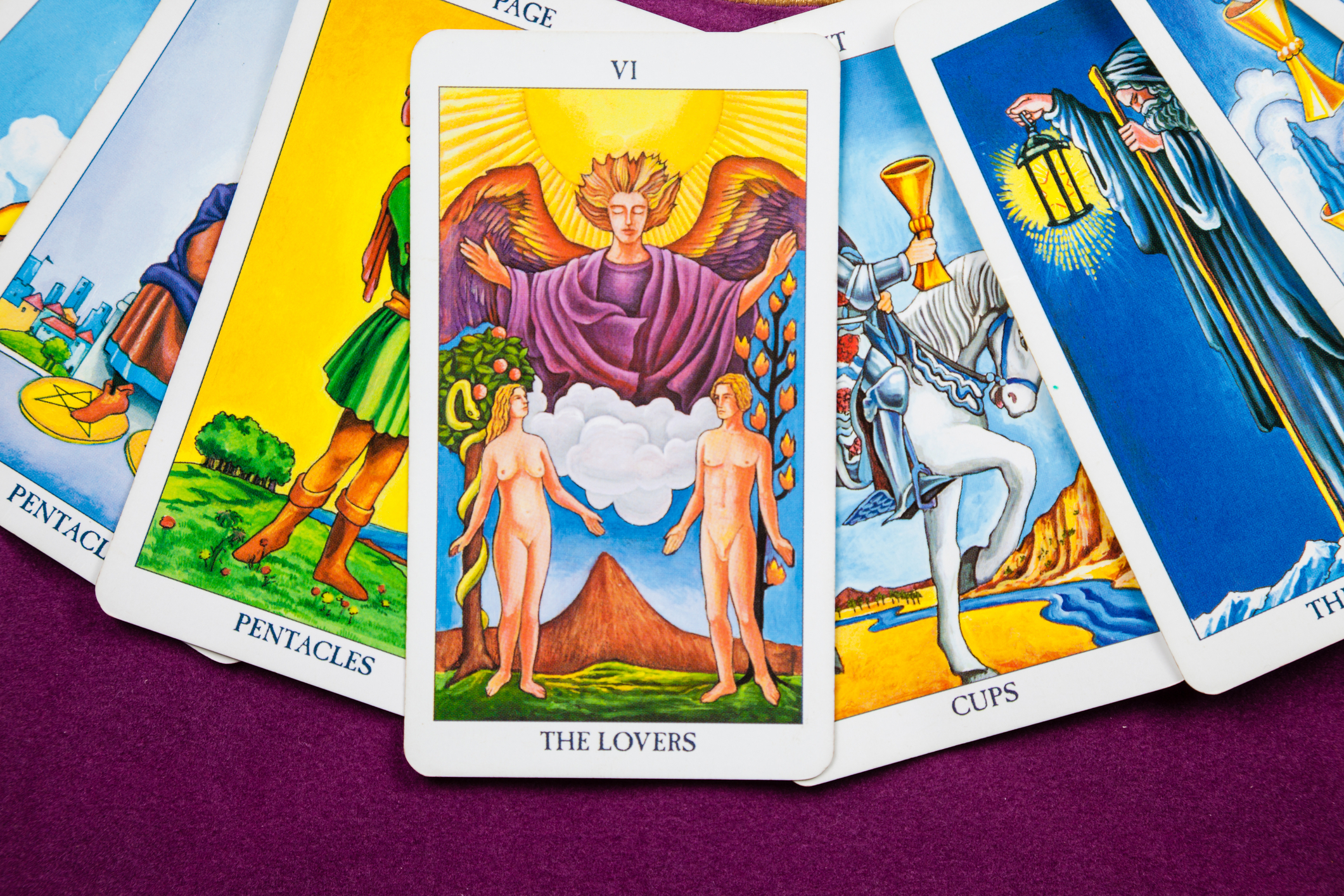By Vincent Pitisci
The Tarot has always been a mystery as to its origin and original purpose. It is speculated its beginning comes from early Renaissance Europe in the fifteenth century; a time of intellectual transformation and innovation. The oldest Tarot cards we have to date are mid-fifteenth-century Italian, and were used for gaming such as torocchi, tarock, and others.
It wasn’t until the late-eighteenth-century that the Tarot became associated with fortune-telling and the occult. Many names have been involved with the Tarot since that time. Many pages have been written about the Tarot’s history. I am just giving some basic information about a select few individuals who I feel are the most important.
Jean-Baptiste Alliette (1738–1791)
The French occultist is considered the first professional Tarot occultist known, who made his living by card divination. He went by the name Etteilla: Alliette spelled backwards, after the manner of Hebrew writing. He designed a Tarot deck which was published in 1789.
Antoine Court de Gébelin (1719–1784)
Antoine Court de Gébelin was a former Protestant pastor. In 1781 he published a book known as Le Monde Primitif. The book implied that the Tarot was of Egyptian origin, and revealed the mysteries of Isis and Thoth, gods of ancient Egypt. He also claimed the word tarot was Egyptian as well. He goes on to explain that tar was Egyptian for royal, and ro was Egyptian for road. So it was understood that the word tarot was Egyptian for “a royal road to wisdom.” After the Rosetta Stone was deciphered, Egyptologists found nothing in the Egyptian language to support Court De Gébelin’s claims.
Eliphas Levi (born Alphonse Louis Constant) (1810–1875)
Levi was a French magician who saw a relationship of the Tarot to the Jewish Kabbalah. Among many other insights, Levi claimed the 22 major arcana of the Tarot symbolized the 22 paths in the Kabbalah’s Tree of Life, and the 22 Hebrew letters.
Dr. Gerard Encausse (1865–1916)
Using the pen name of Papus, Dr. Encausse was a French occultist and physician. He served Russian Tsar Nicholas II and Tsarina Alexandra as physician and occult consultant. He claimed to have contact with spirits as well.
Papus also felt the Tarot originated in Egypt. As a physician, he served as a doctor in a field hospital in World War One, where he died of tuberculosis. Papus wrote Tarot of the Bohemians in 1889. It is one of the most classic books on the Tarot still in circulation today.
Arthur Edward Waite (1857–1942)
Waite changed the Tarot cards in dramatic ways. He changed some of the titles of the cards that had Christian overtones, such as changing the “Pope” card to the “Hierophant,” and the “Papess” card to the “High Priestess.”
Another change made by Waite was switching the order of the “Justice” card, usually number eight, with the “Strength” card, usually number eleven. The biggest change was adding images to the pip cards. The illustrations are mostly of people doing something representing the meaning of the card. Waite called his deck a “rectified” Tarot deck. It is still the most popular Tarot deck to date, called the Rider-Waite, or Rider-Waite-Smith deck.
Carl Gustav Jung (1875–1961)
Carl Jung was a Swiss psychologist and psychiatrist. He was the first psychoanalyst to see a significance to the Tarot’s symbolism. He seems to have associated the Tarot with archetypes: fundamental types of persons or situations embedded in the collective unconscious of all human beings.
In his book Psychological Types, he claims people are different in essential ways, and that we all are born with a natural inclination to one of the four basic psychological functions of the mind: thinking, feeling, sensation, and intuition; and that these functions identify who we are.
The Tarot Deck
A Tarot deck is made up of two separate packs of cards. There are 78 cards total. One pack consists of 22 cards called the Major Arcana. These cards have mysterious, dreamlike images, and are considered to represent universal principles and metaphysical concepts.
The second pack, called the Minor Arcana, is similar to today’s playing cards. They consist of 56 cards and are divided into four suits. Each suit has 10 numbered pip cards (ace through 10), and four court cards: “King,” “Queen,” “Knight,” and “Page.” Some time ago, the “Knights” were eliminated, and the “Pages” were renamed “Jacks” to make up today’s standard playing card deck. The term “jack” means an apprentice in some skill or trade. The suits were changed as well. The suits of the Tarot are “Swords” (Spades), “Cups” (Hearts),”Wands” (Clubs), and “Pentacles” (Diamonds).
Today’s deck of playing cards originated from the tarot Minor Arcana, and still keeps one Major Arcana card: the “Fool.” Today it is called the “Joker.” There are many different Tarot decks available today, and they all will have a total of 78 cards, and a Major and Minor grouping. The suits of the Minor Arcana might have different yet similar titles as well; for example, “Coins,” “Pentacles,” or “Discs,” are identified as the same suit in different Tarot decks, usually referred to as the suit of “Pentacles.”
Vincent Pitisci is the author of Genius of the Tarot: A Guide to Divination with the Tarot and The Essential Tarot: Unlocking the Mystery (both available in paperback through Amazon). His contact information and services can be found at www.pitisci.com. Pitisci lives and maintains a private practice as an intuitive consultant in Chicago’s southwest suburb of Berwyn, Illinois.
 Conscious Community Magazine Dedicated to Elevating Consciousness
Conscious Community Magazine Dedicated to Elevating Consciousness




